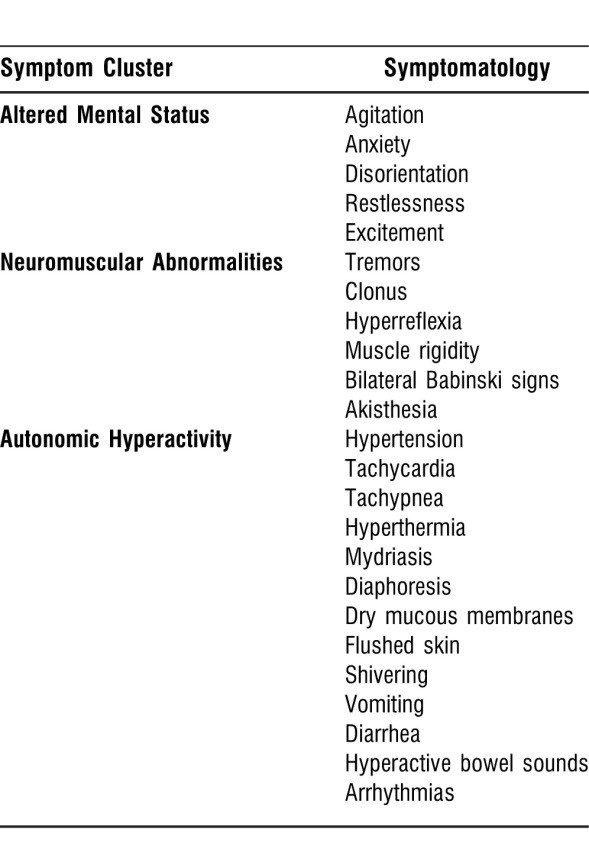What is serotonin syndrome? How should I treat?
M3 India Newsdesk Sep 17, 2021
Serotonin syndrome is a potentially life-threatening drug reaction and clinicians need to be completely aware of this condition while prescribing any serotonergic drug. Since there are no confirmatory lab tests available yet for the condition, it is vital to understand the specific symptom giveaways for early diagnosis and management.
What is serotonin syndrome?
Serotonin syndrome is a potentially life-threatening condition precipitated by the use of serotonergic drugs. It may be a consequence of therapeutic medication use, accidental interactions between medications or recreational drugs, or intentional overdose.
Signs and symptoms
Signs of excess serotonin range from tremor and diarrhoea in mild cases to delirium, neuromuscular rigidity, and hyperthermia in life-threatening cases. The difficulty for clinicians is that mild symptoms may be easily overlooked, and an inadvertent increase in the dose of the causative agent or the addition of a drug with proserotonergic effects may provoke a dramatic clinical deterioration.
Many reports prefer to call this serotonin toxicity rather than syndrome due to its wide range of symptoms and toxicity. Symptoms usually begin within 24 hours of an increased dose of a serotonergic agent, the addition of another serotonergic agent to a drug regimen, or overdosing.

The syndrome most often presents as a clinical triad of mental status changes, autonomic hyperactivity, and neuromuscular abnormalities, but not all of these findings are consistently present in all patients with the disorder.

Manifestation of the disease
Patients with mild cases may be afebrile but have tachycardia, with a physical examination that is notable for autonomic findings such as shivering, diaphoresis, or mydriasis. The neurologic examination may reveal intermittent tremor or myoclonus, as well as hyperreflexia. A moderate case involves such vital-sign abnormalities as:
- Tachycardia
- Hypertension
- Hyperthermia
A core temperature of 40°C is common in moderate intoxication. Common features of the physical examination include:
- Mydriasis
- Hyperactive bowel sounds
- Diaphoresis
- Normal skin colour
Changes in mental status include mild agitation or hypervigilance, as well as slightly pressured speech. Patients may easily startle or adopt a peculiar head-turning behaviour characterised by repetitive rotation of the head with the neck held in moderate extension.
In a severe case of serotonin syndrome, the patient may develop severe hypertension and tachycardia that may abruptly deteriorate into frank shock. Such patients may have agitated delirium as well as muscular rigidity and hypertonicity. The muscle hyperactivity may produce a core temperature of more than 41.1°C in life-threatening cases. Laboratory tests may reveal metabolic acidosis, rhabdomyolysis, elevated levels of serum aminotransferase and creatinine, seizures, renal failure, and disseminated intravascular coagulopathy.
Diagnosis of serotonin syndrome
No laboratory tests confirm the diagnosis of serotonin syndrome. However, the following algorithm may come in handy while reaching a conclusion.

The differential diagnosis includes anticholinergic poisoning, malignant hyperthermia, and neuroleptic malignant syndrome, each of which can be readily distinguished from the serotonin syndrome based on clinical presentation and the patient’s medication history.
Management of serotonin syndrome
- This involves the removal of the precipitating drugs, the provision of supportive care, the control of agitation, the administration of 5-HT2a antagonists, the control of autonomic instability, and the control of hyperthermia.
- Many cases of serotonin syndrome typically resolve within 24 hours after the initiation of therapy and the discontinuation of serotonergic drugs, but symptoms may persist in patients taking drugs with longer half-lives.
- Supportive care, comprising of administration of intravenous fluids and correction of vital signs, are the highlights of the therapy.
- The intensity of therapy depends on the severity of the illness. Mild cases can be managed with supportive care, removal of the precipitating drugs, and treatment with benzodiazepines.
- Moderately ill patients should receive treatment for correction of cardiorespiratory and thermal abnormalities. They should also receive the administration of 5-HT2a antagonists.
- Hyperthermic patients (whose temperature >41.1°C) should receive the above therapies as well as immediate sedation, neuromuscular paralysis, and orotracheal intubation.
Conclusion
The prognosis of serotonin syndrome is only favourable if the patient is treated. Therefore, physicians must be astute and aware of the possibility of this life-threatening syndrome. If the diagnosis is unclear, physicians should discontinue any serotonergic agents and start supportive care.
The best way to prevent this syndrome is to avoid multidrug regimens and to discontinue any serotonergic agent before starting another. If a patient is experiencing a mild form of serotonin syndrome but requires the medication, it is acceptable to assess the risks and benefits of the treatment and to decide whether the patient should remain on the drug.
Due to the widespread use of serotonergic drugs, clinicians must maintain a high clinical suspicion for serotonin syndrome. Early recognition and treatment of serotonin syndrome can go a long way in preventing significant morbidity and mortality.
-
Exclusive Write-ups & Webinars by KOLs
-
Daily Quiz by specialty
-
Paid Market Research Surveys
-
Case discussions, News & Journals' summaries